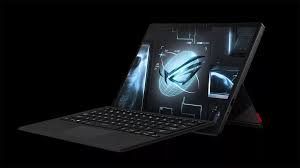Introduction: In today’s rapidly evolving educational landscape, technology has emerged as a powerful catalyst for transforming the traditional classroom experience. From interactive learning tools to virtual classrooms, the integration of technology has revolutionized the way students and educators engage with knowledge. This blog post delves into the pivotal role technology plays in reshaping education, enhancing student outcomes, and preparing learners for the challenges of the digital age.
The Evolution of Classroom Dynamics:
Technology has redefined the dynamics of the classroom, shifting it from a one-size-fits-all approach to a personalized and interactive learning environment. With digital platforms offering adaptive learning modules, students can now progress at their own pace, allowing educators to cater to individual learning styles. This evolution fosters a more engaging and inclusive atmosphere where every student can thrive.
Engagement Beyond Boundaries with Virtual Learning:
Virtual learning has broken down geographical barriers, enabling students to access educational resources and expertise from around the world. The rise of virtual classrooms and online courses has provided unprecedented opportunities for remote learning, making education accessible to those who may have previously faced limitations. This global connectivity cultivates cross-cultural understanding and prepares students for a globally interconnected workforce.
Empowering Educators Through Data Insights:
Technology empowers educators by providing valuable insights into student performance and engagement patterns. Learning management systems and data analytics tools offer a comprehensive overview of each student’s progress, allowing teachers to identify areas of improvement law essay writing and tailor their instruction accordingly. This data-driven approach enhances the effectiveness of teaching strategies, ensuring that no student is left behind.
Fostering Collaborative Learning:
Collaboration is a cornerstone of the modern work environment, and technology equips students with the necessary tools to collaborate seamlessly. Online discussion forums, collaborative projects, and real-time document sharing platforms encourage teamwork and communication skills. These experiences mirror real-world scenarios, preparing students for future careers that demand collaborative problem-solving.
Preparing Digital Natives for the Future:
Today’s students are digital natives, growing up in a world saturated with technology. Integrating technology into education not only engages these tech-savvy learners but also equips them with vital digital literacy skills. From discerning credible sources online to understanding data privacy, these skills are crucial for navigating the digital landscape responsibly.
Conclusion: Embracing the Educational Revolution:
As technology continues to reshape every facet of our lives, its integration into education has become an essential step toward progress. The classroom experience is no longer confined to the four walls of a physical space; it has expanded to encompass a dynamic digital realm that fosters personalized learning, global connectivity, and innovation. By harnessing the power of technology, educators and students alike can unlock a future where education knows no bounds. Embracing this educational revolution is not just an option but a necessity to prepare the leaders of tomorrow for a rapidly evolving world.




